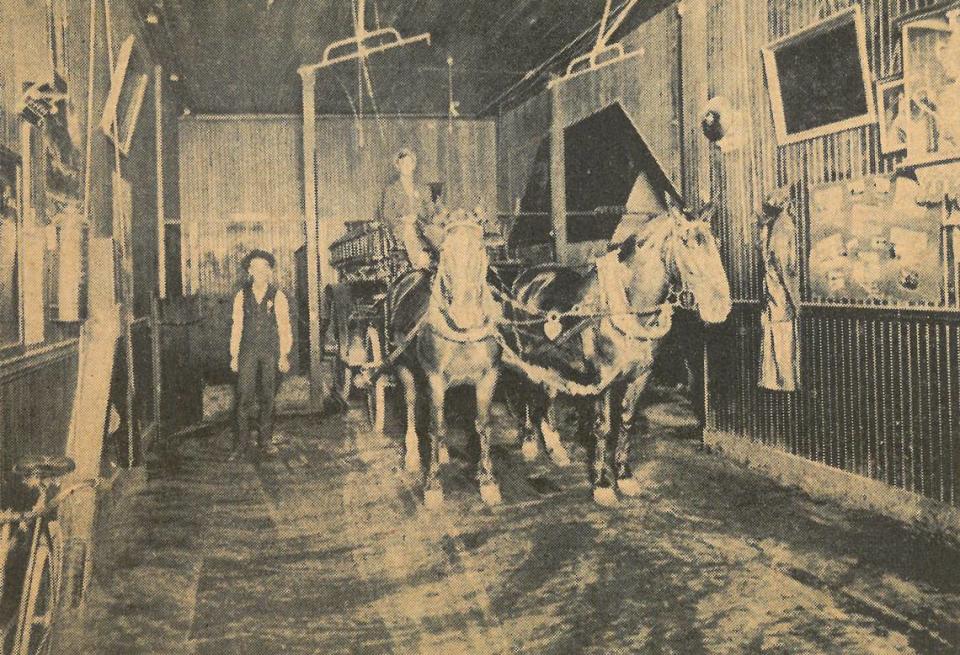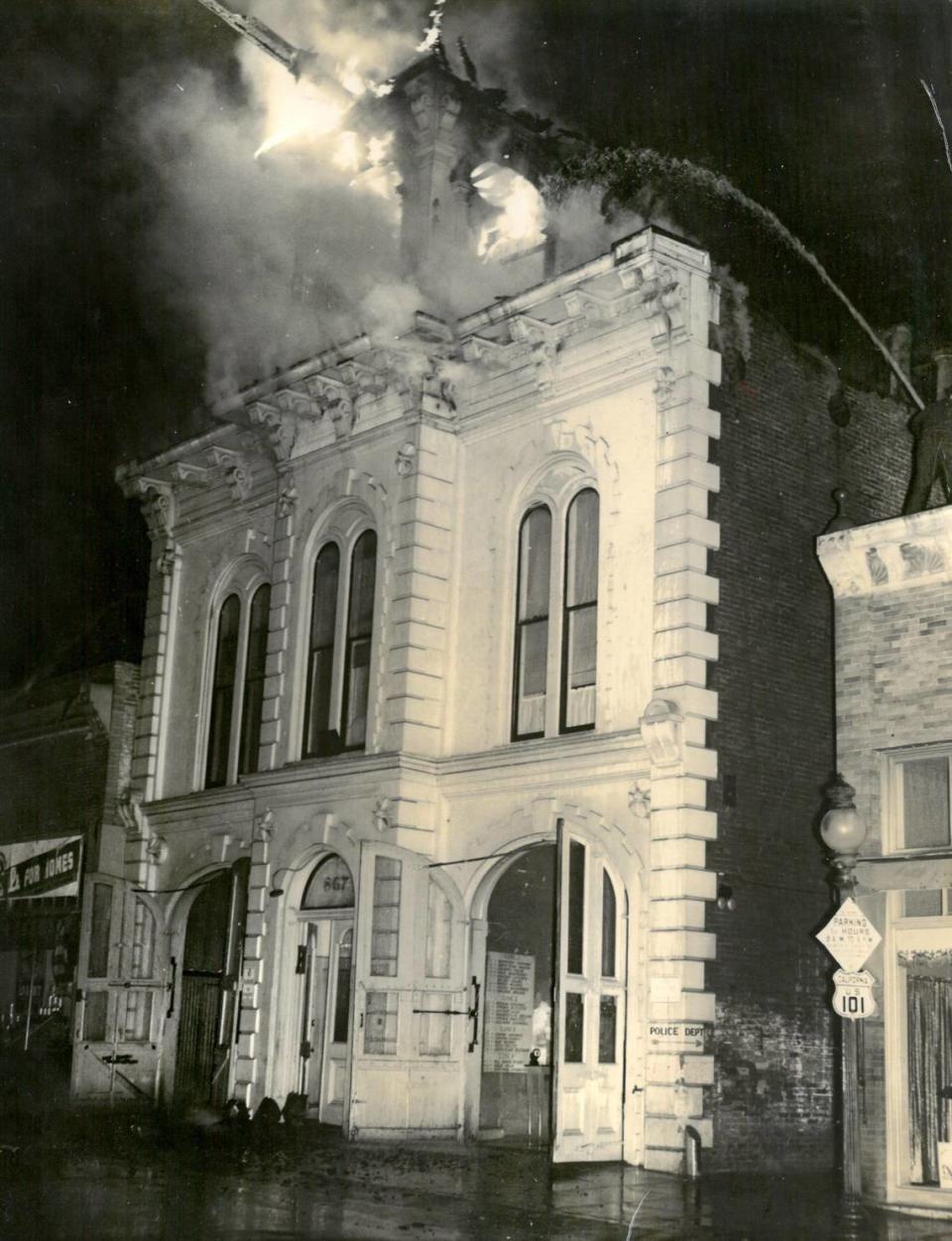What did downtown SLO look in 1930s? Photo reveals long-gone buildings, original hilltop
What did San Luis Obispo’s iconic Terrace Hill look like in the 1920s and ’30s?
Here’s a hint: The top had a distinctly different shape.
This historical photo of downtown San Luis Obispo apparently taken from the roof of a two-story building on Monterey Street.
The corner of the Sinsheimer building is in the foreground at the bottom right corner.
The biggest natural feature in the picture is Terrace Hill, but it’s unrecognizable to the modern viewer. Yes, this is a rare picture of the hill before the top was scraped flat to provide fill for various projects.
Interesting details are revealed under a magnifying glass.

Near the top of the hill is a radio antenna and water tanks appear to provide water pressure to that end of town.
White letters appear to say “NN. S. R” They are angled to be more readable from an airplane so they might be a flight navigation aid.
A billboard for Albers Oats can be seen on the side of Terrace Hill. The breakfast cereal company touted their controlled-toasting process in print ads.
Modern viewers might have difficulty identifying the building at the right with the flag snapping in the wind. It’s the old San Luis Obispo City Hall, built in 1887.

The building, which housed the fire station on the first floor, was built in the era of horse-drawn fire equipment.
The structure suffered a fire in 1938. The fire apparently started in the belfry due to an electrical short.
The tower was removed in 1945 due to safety issues, according to Guy Crabb’s “Higuera Street” book in his “San Luis Obispo: 100 Years of Downtown Businesses” series. It was torn down in in 1953 and replaced by the building that was the longtime home of Charles Shoes.
The old city jail can still be found in the alley behind the building.

At the far left of the picture can be seen one of San Luis Obispo’s early movie theaters, the Elmo.
As historian Dan Krieger wrote, the name Elmo was a mashup of the first two letters of the phrases “Elk’s Club” and “motion picture.”
The two-story building at the corner of Marsh and Morro streets was built by the fraternal club. The Elks rented the movie theater, which opened in November 26, 1912.
The first movie to be shown there was a silent film, “The Rose of Panama.” The star was Chapine, advertised as “The Charming French Prima Donna From the Opera Comique, Paris.”
Elks members and their guests dressed up in their best for the opening.
That building was demolished in August 1960, replaced by a bank. The Elks moved to a mid-century modern building on Elks Lane.

Unfortunately, I couldn’t find signs of horse or automotive transportation in the photo to narrow the time frame of when it was taken.
The first air date for a commercial radio station in San Luis Obispo was 1937, when KVEC went on the air but it it is unclear whose radio tower is in this photo.
My best guess is the picture is from sometime between 1920 and 1938. You can contact me at dmiddlecamp@thetribunenews.com if you have a better idea.

 Yahoo Movies
Yahoo Movies 
